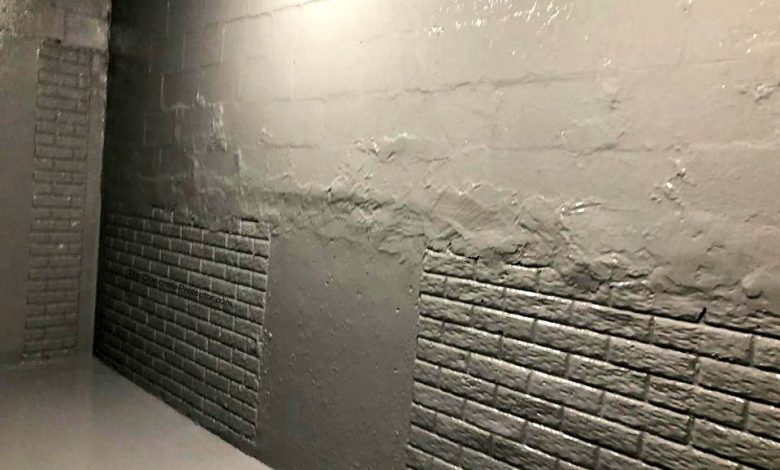An In-Depth Guide About Basement Sealing: Top 10 Best Methods about Basement Sealing

What is basement sealing?
Basement sealing is a process that protects the portion of your home that has been built into the ground (i.e., the basement) from water damage and other issues caused by moisture in the background. Maintaining good airflow within this space keeps it healthy, dry, and free from mold to prevent damage to walls and infrastructure.
Basement sealing is done in homes that are built into the ground or have crawl spaces. These areas are subject to water damage if they are not adequately sealed. There are various ways to accomplish this process, but they all serve the same purpose: Stopping water from entering your basement by any means necessary.
Materials used for Basement Sealing
There are four common types of materials used for sealing basements: elastomeric coating, spray foam insulation, polyurethane, and asphalt membranes (which includes rubberized asphalt). Each has its advantages and disadvantages:
- Elastomeric: These coatings are also used to seal around the top of basement stairs; these coatings are perfect for cracks and other openings where moisture can easily penetrate. They should last ten years or more but will need reapplication if damaged by a car or furniture dragging across them. The downside is that they cannot be painted and cost $4 to $6 per square foot installed.
- Spray foam insulation: This product forms airtight seals around pipes and electrical outlets in corners, walls, or ceilings with minimal disturbance of surfaces surrounding it. It is also expensive at about $7 to $8 per square foot installed.
- Polyurethane: Provides a flexible waterproof coating for wet areas like crawl spaces with no structural damage required. It is also good on concrete walls and floors but may need to be re-applied every five years. At $4.50 per square foot installed, it’s more economical than elastomeric coating.
- Asphalt membrane: These materials resist tearing and stretching and remain pliable and flexible over time. Also used in parking garages where cracking isn’t a problem, this material costs the least at $2 per square foot installed.
Top 10 best methods about basement sealing with description
Sealing the basement to prevent moisture intrusion is very important to homeowners in many parts of the country. High humidity levels, which often result from weather conditions, can cause mold growth and damage personal property stored in basements. Here are some facts about sealing basements against moisture intrusion, along with the top 10 best methods for doing so.
1. Air Sealing
With proper air sealing, a home will use less energy, which saves homeowners money on their monthly utility bills. It is a practical and cost-effective way to reduce humidity levels, especially in cold climates where homes are typically closed up for long periods.
2. Window Well Covers
Read more:What is Drainage System for Basements? Top 7 Best Drainage system for Basements with Description
Adding window well covers reduces the chances that both fresh and wastewater from rain or melting snow will enter your basement. In addition, it protects your basement windows from debris that can fall from above when they are exposed without window wells surrounding them.
3. Proper Drainage
In most parts of the U.S., there is no such thing as too much drainage for outdoor basement waterproofing. This is especially true for homes located on sloping properties or those with their basement windows too close to the ground level of the exterior. Homes situated on hillsides often experience significant water damage due to surface runoff, particularly during heavy rainstorms. As a result, proper grading and drainage measures should be part of any successful basement waterproofing system plan installed by professional contractors in your area.
4. Caulking
Caulking is one of the most cost-effective ways homeowners can reduce moisture intrusion into basements made susceptible to leaks by cracks and penetrations in foundation walls and other areas where outside air enters the home through framing materials such as brick and siding, repairing cracks and holes in walls and foundation before caulking is recommended as part of a basement waterproofing system by professionals.
5. Sealant for Interior Wall Cracks
Interior cracks should also be filled to stop water from passing through them into the interior of a home. While exterior wall cracks can be challenging to access, their appearance can also signal that other problems exist with external drainage or grading, which should be corrected before sealing the interior.
6. Ventilation Sealing
Proper ventilation must always go hand-in-hand with air sealing when it comes to the best approach to basement waterproofing against humidity penetration from outside soil conditions. In most cases, exhaust vents from sump pumps and appliances as laundry dryers should not directly connect to the interior of a home. Installing ventilation fans equipped with automatic shut-offs that turn themselves on whenever humidity levels rise is another possibility worth considering if homeowners want to decrease energy costs and eliminate moisture problems simultaneously.
7. Condensation Concerns
Humidity control efforts for basements include air sealing, insulation, vapor barriers, and ventilation that works together to prevent condensation from forming on basement walls during cold months when exterior soil temperatures are below freezing. Suppose this ever becomes an issue in your area. In that case, you can avoid moisture accumulation by adding insulation between drywall on outside basement walls, along with installing vapor barrier sheets over masonry surfaces before painting or decorating them.
8. Waterproofing Systems
Adding a waterproofing system to an exterior drainage plan along with air sealing, caulking, and ventilation will give your basement the best chance of staying dry, whatever the local climate conditions may be. The use of gravel trenches around foundation walls can also help divert water away from underneath them where it could otherwise seep inside through small cracks or penetrations over time.
9. Using Puddling Mats
Puddled mats are another affordable addition to any basement waterproofing system that homeowners should consider adding, even if their basements never seem to become wet enough for this problem to occur in them on its own. Installed outside during construction before backfilling, puddled mats create a drain away from foundation walls which help reduce moisture problems that can accumulate due to ground saturation.
10. Mold Prevention
Reducing humidity levels in basements can also help prevent mold growth on surfaces made damp by water penetration into them. However, most basement waterproofing experts agree that avoiding mold is more of a problem with humidity caused by the interior than external soil conditions, often beyond homeowners’ control. However, taking the necessary steps to ensure home air sealing, ventilation, and drainage work properly will decrease the likelihood of mold ever becoming an issue for your family.



